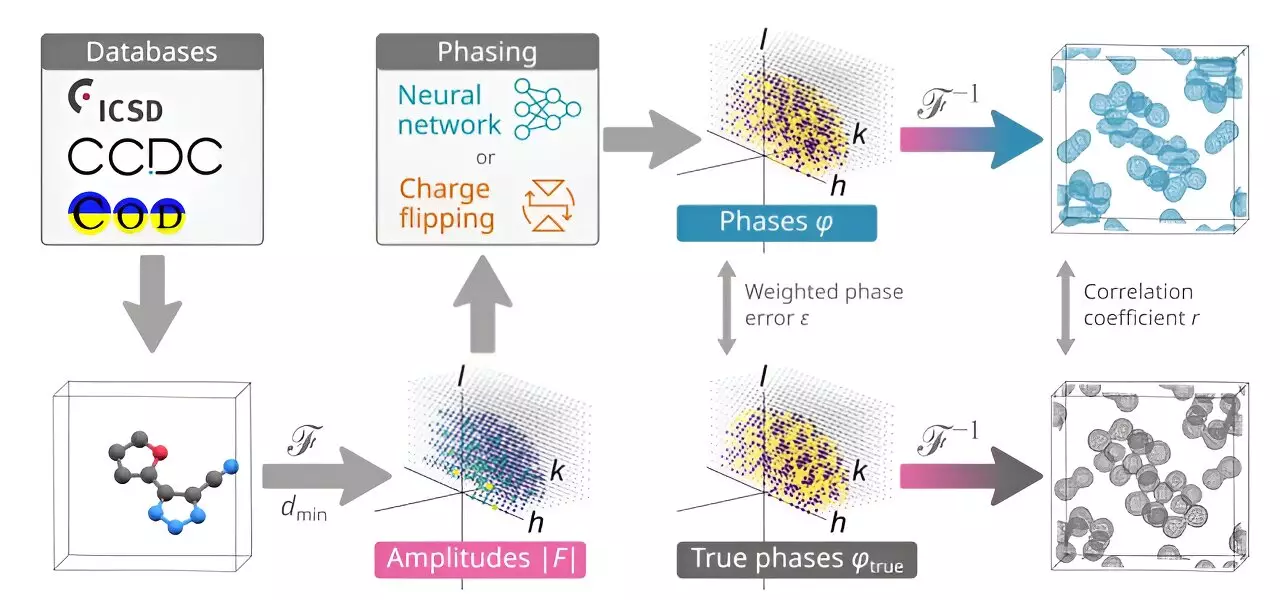Chemistry has always been a field that relies heavily on precise analysis and prediction. Over the years, chemists have used various methods to determine the structure of small molecules, with one common technique being the use of x-ray crystallography. However, this process has its limitations, especially when it comes to predicting the phase of x-rays that crystals have diffracted. In a groundbreaking development, a team of chemists at the University of Copenhagen has created an artificial intelligence (AI) application that aims to revolutionize the way small molecule structures are predicted.
Traditionally, chemists have relied on the conversion of small molecule batches into solid crystals, followed by the firing of x-ray beams at them. By analyzing the diffraction pattern produced by the x-rays, chemists can decipher the structure of the molecules within the crystal. However, a major limitation of this method is the inability to accurately measure the phase of the x-rays. This often results in fuzzy diffraction patterns, making it challenging to determine the exact structure of the molecules.
In their research published in the journal Science, Anders Larsen, Toms Rekis, and Anders Madsen detail the development of their AI application, PhAI. The team utilized computer models to generate millions of fake small molecule structures and simulate the fuzzy diffraction patterns that would be produced. By training the AI on the relationship between crystal structures and diffraction patterns, they were able to accurately predict the phase and intensity information needed to determine the structure of small molecules.
The effectiveness of the PhAI application was put to the test by predicting the structure of 2,400 small molecules for which the structure was already known. The results were promising, with the AI system accurately predicting the structures of these molecules. This success demonstrates the potential of AI in revolutionizing the way small molecule structures are determined in chemistry.
Looking ahead, the research team plans to further enhance the capabilities of PhAI, with the goal of expanding its predictive abilities to molecules beyond 50 atoms. By continuing to develop and refine this AI application, chemists can look forward to a future where the prediction of small molecule structures is faster, more accurate, and more efficient.
The development of PhAI represents a significant advancement in the field of chemistry, showcasing the potential of AI in transforming traditional methods of structure prediction. With further research and refinement, AI applications like PhAI have the power to revolutionize the way chemists analyze and predict the structures of small molecules.


Leave a Reply